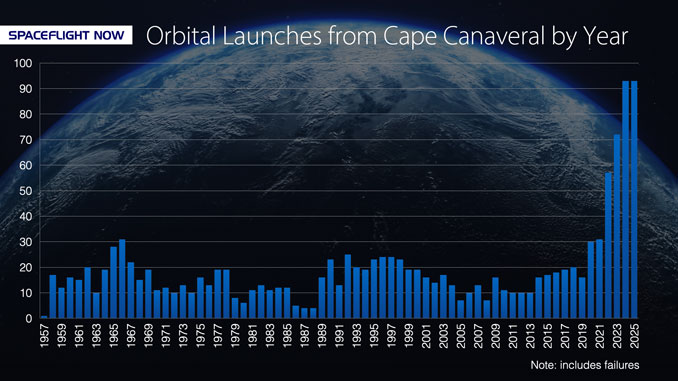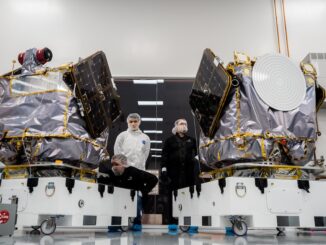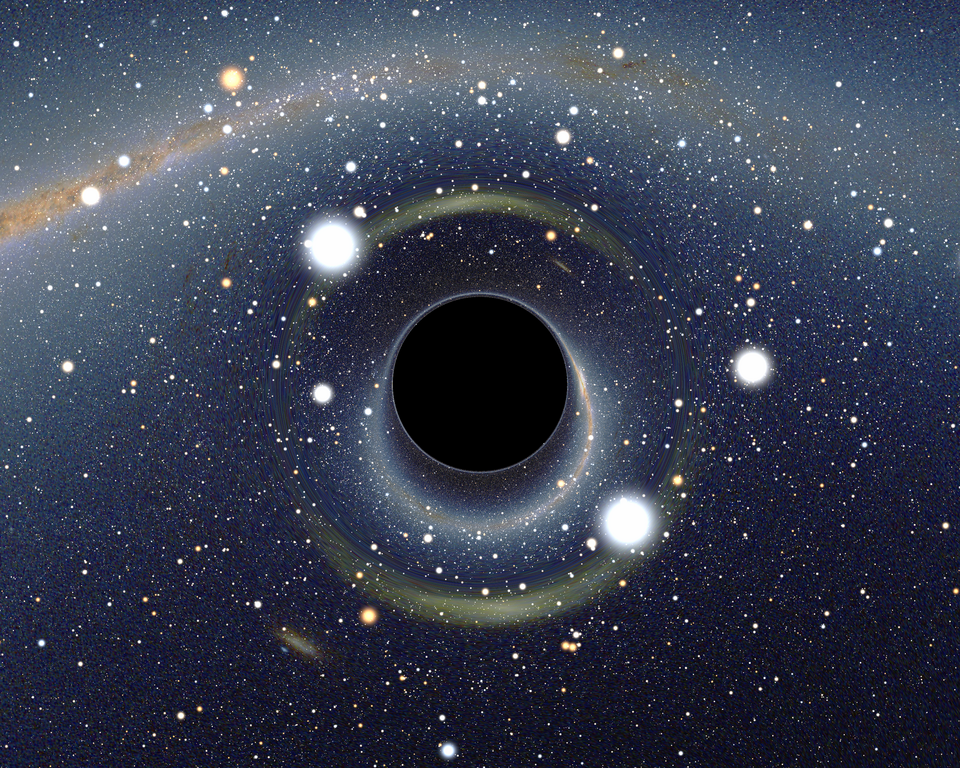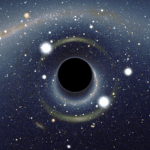Now Reading: Live coverage: Blue Origin targets Nov. 12 New Glenn launch following weekend weather scrub
-
01
Live coverage: Blue Origin targets Nov. 12 New Glenn launch following weekend weather scrub
Live coverage: Blue Origin targets Nov. 12 New Glenn launch following weekend weather scrub


Blue Origin is stepping back up to the plate to take another crack at launching its 98-meter-tall (321 ft) New Glenn rocket from Cape Canaveral Space Force Station on Wednesday, Nov. 12.
A confluence of poor weather, an errant cruise ship in the keep out zone and a ground systems issue at the pad were roadblocks to a Sunday launch attempt. In rescheduling the mission, Blue Origin said in a social media post that it was avoiding poor weather on Monday and Tuesday, but didn’t mention the status of the ground systems issue.
The company founded by Amazon founder Jeff Bezos is now targeting liftoff from Launch Complex 36 during an 87-minute window that opens at 2:50 p.m. EST (1950 UTC) on Wednesday.
Spaceflight Now will have live coverage beginning about three hours prior to liftoff.
The 45th Weather Squadron forecast a greater than 95 percent chance of liftoff during the window, citing no concerns for meteorological impacts that would prevent launch. Teams did highlight the booster recovery zone as watch item, stating that it was a “moderate” risk on a low-moderate-high scale. Space weather could also be an issue.
On Tuesday afternoon, NOAA’s Space Weather Prediction Center forecast a G4 Severe Watch connected to a coronal mass ejection first detected on Sunday, Nov. 9. It noted that this is just the fourth G4 Watch issued this solar cycle, making it “very rare,” and added that impacts are expected “about midday on Nov. 12.”
“A CME is anticipated to arrive at and partially impact Earth around midday, 12 Nov; with the potential for elevated geomagnetic response and dependent upon the orientation of the embedded magnetic field, potential exists for Severe Storm levels.”
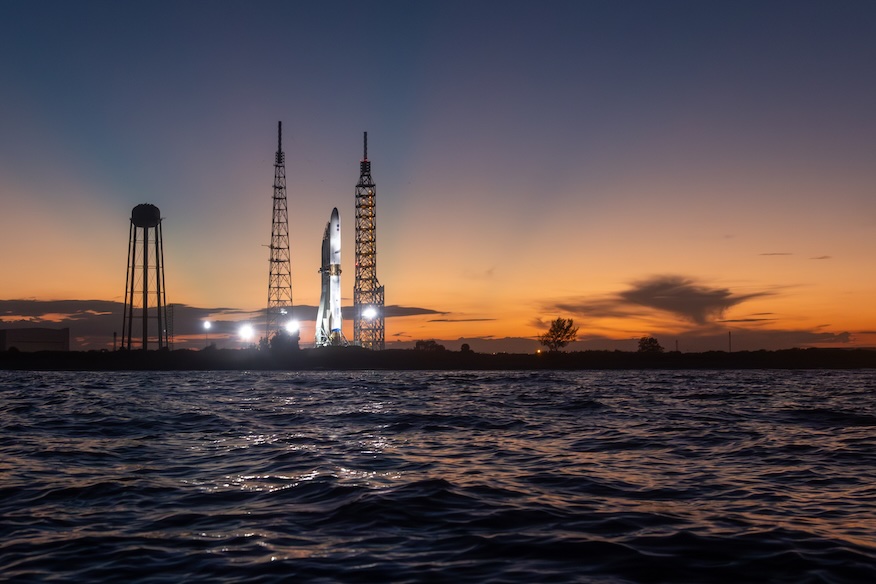
Starting at stage separation, roughly three minutes after liftoff, teams will attempt to steer the first stage booster, named ‘Never Tell Me the Odds’, towards a landing in the Atlantic on a barge, ‘Jacklyn’, which is staged about 375 miles (603.5 km) downrange of the launch pad.
Blue Origin attempted a similar landing with its first New Glenn booster, ‘So You’re Telling Me There’s a Chance’, but the rocket failed to properly relight the three gimbaling BE-4 engines for the reentry burn.
If all goes well, Blue Origin will become the second private company to perform a propulsive landing an orbital class rocket. It plans to reuse its boosters for up to 25 flights initially, assuming successful landings.

What’s onboard?
Nestled within the New Glenn’s 7 m (23 ft) payload fairings are the twin spacecraft that makeup NASA’s Escape and Plasma Acceleration and Dynamics Explorers (ESCAPADE) mission as well as a ride share communications technology demonstration from Viasat.
A little more than 33 minutes after liftoff, the two ESCAPADE satellites, Blue and Gold will deploy from a satellite adaptor called an Evolved Expendable Launch Vehicle (ESPA) ring. Blue separates first and then Gold about 30 seconds later.
They are being released into a highly elliptical orbit, “just shy of Earth escape velocity,” Blue Origin CEO Dave Limp said in a social media post on Nov. 9. The twins will loiter in a novel so-called “kidney bean” shaped orbit around Lagrange Point 2 about a million miles from Earth for about a year.
They will then use the Earth for a gravity assist around fall 2026 to begin a roughly 11-month journey to the Red Planet. They will arrive at Mars roughly two days apart when they will each perform a Mars insertion burn to enter into an elliptical orbit that will slowly be lowered into their target science orbit.
They will be studying Mars’ magnetosphere to learn more about how it’s been influenced by space weather over time.
Mating the twins to their Evolved Expendable Launch Vehicle Secondary Payload Adapter (ESPA) ring. The ESPA ring is what lets multiple smaller spacecraft share a launch on the same rocket. pic.twitter.com/tBlxMkfGG6
— Rocket Lab (@RocketLab) November 9, 2025
The other payload onboard New Glenn from Viasat will remain fixed to the upper stage and be activated about five minutes after the deployment of the second ESCAPADE spacecraft. This is a demonstration of Viasat’s InRange launch telemetry relay solution, which is part of the company’s work under the NASA Communications Services Project.
“InRange is a specific launch telemetry data relay service designed to support launch providers with responsive, real-time data transmission during launch using Viasat’s L-band network,” a Viasat spokesperson told Spaceflight Now in a statement.
“This is a separate solution from Viasat’s high-capacity Ka-band data relay capability (i.e. Real-Time Space Relay), which is also being developed and will separately be demonstrated as part of our NASA CSP program work.”
Stay Informed With the Latest & Most Important News
Previous Post
Next Post
-
 012024 in Review: Highlights from NASA in Silicon Valley
012024 in Review: Highlights from NASA in Silicon Valley -
 02Panasonic Leica Summilux DG 15mm f/1.7 ASPH review
02Panasonic Leica Summilux DG 15mm f/1.7 ASPH review -
 03How New NASA, India Earth Satellite NISAR Will See Earth
03How New NASA, India Earth Satellite NISAR Will See Earth -
 04And Thus Begins A New Year For Life On Earth
04And Thus Begins A New Year For Life On Earth -
 05Astronomy Activation Ambassadors: A New Era
05Astronomy Activation Ambassadors: A New Era -
06SpaceX launch surge helps set new global launch record in 2024
-
 07Space Force plans new ‘Futures Command’ amid pressure to speed up modernization
07Space Force plans new ‘Futures Command’ amid pressure to speed up modernization













